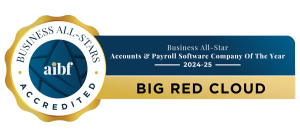Sales Transactions are the summary details of a sale; no details of individual items are entered..
At the Sales Book browse screen click on the Add button in the cloud accounting software. You will then be asked to Select Entry Type, select Sales Book Entries and click OK.
Notes On Sales Book Entries.
Date.
Enter transaction date.
Reference.
If the number is ‘AUTO’ then the next available reference number is assigned to this transaction and will be applied when the transaction is Saved. This is primarily for multi-user configurations to facilitate the allocation of sequential reference numbers in the accounting software.
To change your preference see Setup / Reference Settings.
If ‘AUTO’ is not displayed then it is the next Invoice No.
If the reference number shown is not the one you want you can change it.
Account.
In all circumstances you must enter a Customer’s Account Code. Click on the down-arrow in the Account field to see a list of Customers or add a new one.
Name.
Once you enter a Sales Ledger A/C Code the relevant Customer’s name will automatically display in this box.
Detail.
This box, which you may skip if you do not wish to use it, allows you to further describe the transaction you are entering. Type in whatever you choose (maximum 40 characters) or select an Abbreviation from the drop-down list.
Total.
Enter the VAT inclusive total of the invoice, i.e. the gross total. If you are entering a Credit Note, a negative amount must be entered.
Total VAT.
Enter the total amount of VAT shown on the invoice, regardless of whether it comprises one or more % rates. If there is no VAT on the invoice enter a zero. If the invoice shows only a gross (VAT inclusive) total or is all at a single VAT rate, you may, if you wish to avoid having to calculate the VAT content, skip this box and allow the program to do it for you when in the VAT Analysis boxes below.
VAT Type.
If the Invoice you are creating is in respect of goods/services supplied within the same state and is subject to VAT in the normal way, i.e. it is a Domestic transaction, then you need take no action, simply move on.
If the Invoice is for goods/services delivered outside the state then you will need to change it. From the drop-down list point-and-click at whichever of the two alternatives is appropriate:
| Other EU. | If the sale is to another EU state. |
| Foreign – Non EU. | If the sale is for export to anywhere other than the EU. |
| VAT Exempt. | If the customer is VAT Exempt. |
It is important that all non-Domestic transactions are correctly coded so as that the VAT Return figures for Other EU and Foreign Sales are correct.
VAT Analysis.
Into each of the VAT Analysis % boxes enter the net (VAT exclusive) amount relating to that VAT rate, as shown on the invoice. The program will not allow you to proceed until it is satisfied that the total of all these net amounts equals the difference between the invoice’s gross Total and Total VAT, as already entered above.
Note: When you have only one net amount entry left to make, place the cursor in the appropriate box then press the Page Down (PgDn) key. The system will calculate and ‘write in’ the remaining (unallocated) amount.
If you have opted to skip the Total VAT box (above), then proceed as follows: place the cursor in whichever box represents the VAT % rate which applies to what you have sold, then press the Page Up (PgUp) key. Provided you selected the correct VAT % rate box the entries will have been made for you and the program will have moved you on.
Analysis Categories.
Enter net (VAT exclusive) amounts in one or more of the boxes, as relevant. The program will, again, not allow you to proceed until the total of the amount(s) entered equals the total net amount of the invoice.
Note: When you have only one Analysis Category entry left to make, place the cursor in the appropriate box then press the Page Down (PgDn) key. The system will calculate and ‘write in’ the remaining (unallocated) amount.
Copy Existing Entry.
This button allows the information from a different Sales Book entry to be taken and used in a new entry. When the button is pressed, you are asked for both the Reference Number and the Account Code of the invoice to be copied. With this information, the Big Red Cloud® fills in the details of the new invoice, which can then be edited if necessary, and saved. This feature is the same as that in the Purchases Book.



